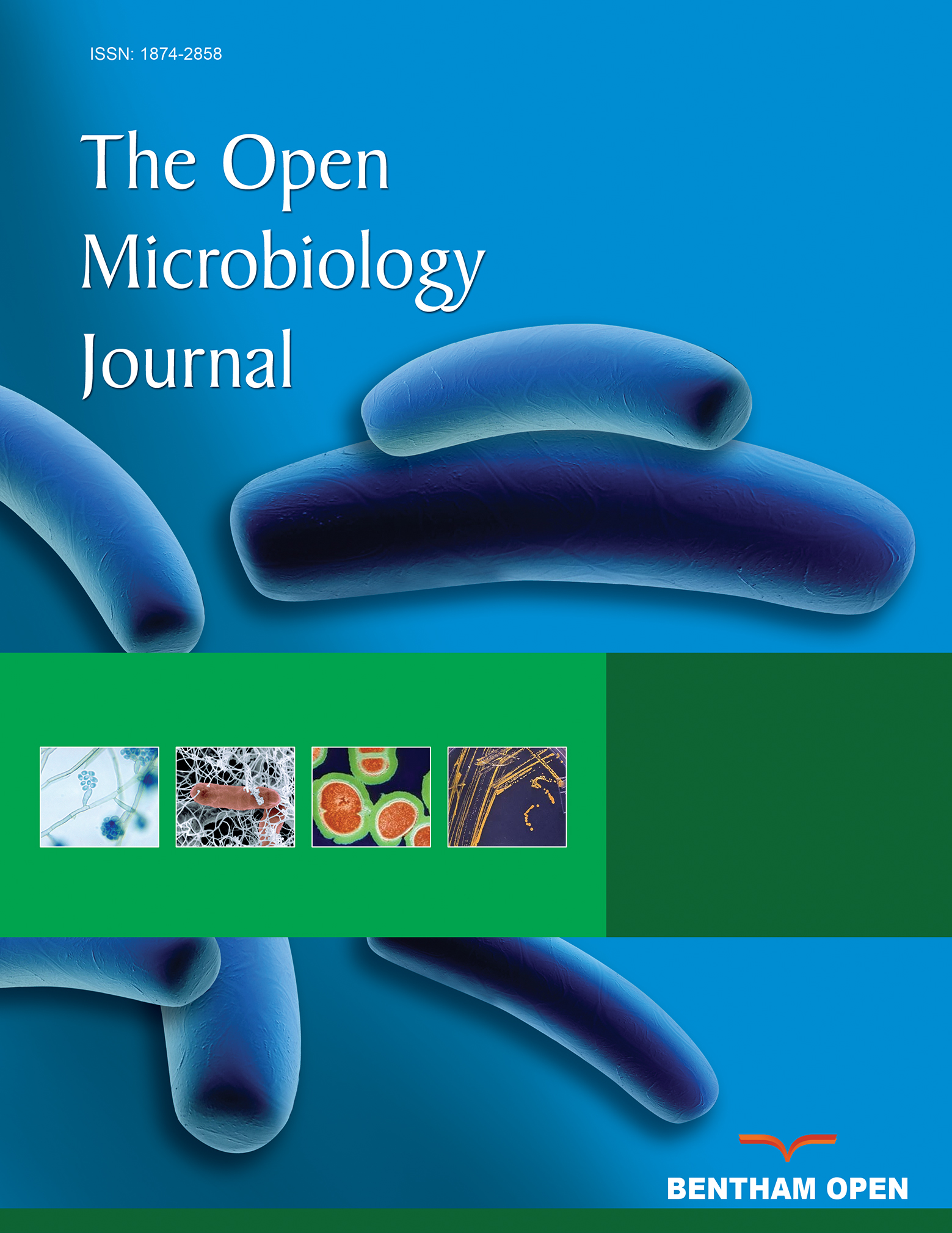All published articles of this journal are available on ScienceDirect.
Optimization of Phosphate Solubilization Activity of Enterobacter Cloacae and Enterobacter Hormaechei from Rhizosphere
Abstract
Introduction:
The availability of phosphorous to plants for uptake and utilization is limited in soil due to fixation in the form of Fe-P, Al-P, and Ca-P; hence, there is a need for phosphate solubilizing organisms to help improve the availability of phosphorus for plants and enhance their productivity.
Background:
The aim of this study was to assess the growth-promoting potential of phosphate-solubilizing bacteria isolated from leguminous and non-leguminous rhizosphere. A total of 52 bacterial strains were isolated from rhizospheres of leguminous (cowpea, groundnut, and soybean) and non-leguminous (rice, maize, and cassava) plants, using the standard pour plating procedure.
Methods:
The bacterial strains were subjected to preliminary screening for phosphate solubilization potential in solid media, using the degree of solubilization index as an indicator. Further screening of isolates that showed remarkable solubilization index during preliminary screening was carried out in a liquid medium. Optimum conditions (external carbon and nitrogen sources, temperature, pH, and initial inoculum concentration) for phosphate solubilization by the isolates were determined. The isolates were identified using the 16S rRNA polymerase chain reaction. Sequences were deposited in the National Centre for Biotechnology Information database and ascension numbers were obtained.
Results:
The results revealed five bacterial species (two species of Enterobacter hormaechei and two species of Enterobacter cloacae) to show significant phosphate solubilization in liquid and solid media. Although the study revealed no significant difference in phosphate solubilization in the presence of the isolates at the respective carbon and nitrogen sources, the highest solubilization was observed in the medium that contained sodium acetate and ammonium sulphate, respectively. In the presence of carbon or nitrogen sources, no particular trend of increase or decrease in phosphate concentration throughout the incubation period was observed. However, the highest phosphate solubilization was observed at 72 h of incubation. This observation was irrespective of the test isolates. Incubation temperature of 35oC and medium pH of 9 were observed to show significantly higher phosphate solubilization in the presence of the isolates.
Conclusion:
In addition, the study revealed no observed consistent pattern of increase or decrease with the period of incubation at different initial inoculum concentrations. The application of the test isolates as soil inoculants could enhance growth promotion and help improve the yield.


